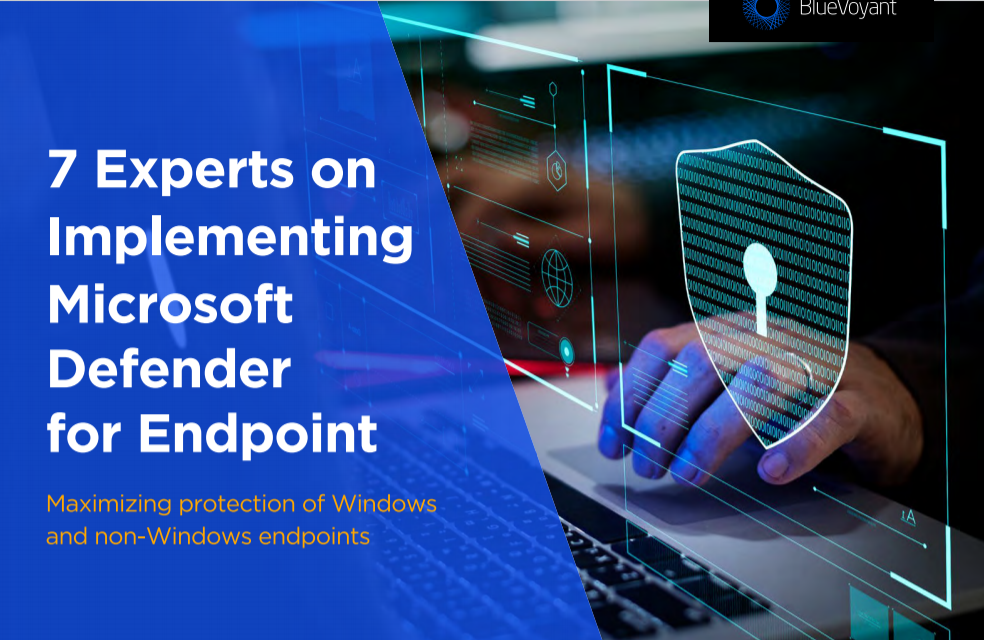The book includes insights from the following experts:
- James P. Courtney II, J&M Human Capital and Cybersecurity Consultants, LLC, CEO/CISO, Read the article here >>
- Maarten Leyman, delaware BeLux, Senior Security Consultant, Read the article here >>
- Oscar Monge, Rabobank, Security Solutions Architect, Read the article here >>
- Shahab Siddiqui, Petrofac, Global Head of Cybersecurity, Read the article here >>
- Rebecca Wynn, [24]7.ai, Global CISO & Chief Privacy Officer, Read the article here >>
- Michael Kavka, R.J. O’Brien, Sr. Security Engineer, Read the article here >>
- Nirav Kumar, Philips Netherlands, Security Specialist, Read the article here >>
7 Experts On Implementing Microsoft Defender for Endpoint was generously sponsored by bluevoyant.
Endpoints are the primary attack vector for a range of threats, which is why endpoint detection and response (EDR) is critical to IT security. As Microsoft’s essential EDR solution, Microsoft Defender for Endpoint (formerly Microsoft Defender Advanced Threat Protection) has unique strengths because of its artificial intelligence– driven, automated investigation and response functionality.
As with other security tools in the Microsoft 365 Defender suite, deploying Microsoft Defender for Endpoint is easy. With the right licensing, you can turn the tool on with just a few clicks. Turning it on and maximizing its effectiveness, however, are two completely different things.
With generous support from BlueVoyant, we reached out to seven security experts to learn how best to optimize Microsoft Defender for Endpoint by asking them this question:
Given your experience with this tool, what advice can you offer for transitioning to and optimizing Microsoft Defender for Endpoint?
Advice includes using Microsoft security baselines, taking advantage of attack surface–reduction rules, and using a configuration manager. To refine the performance of Microsoft Defender for Endpoint, experts say that you must continuously monitor and correct its results. The experts also explain how to find the knowledge and skills you need to get the most out of this solution.



